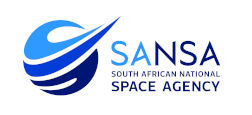
January 19, 2022
High-Frequency communications or HF is an essential tool used across the globe and especially on the African continent for long-distance communications.
Many sectors across the continent rely greatly on HF communications for different purposes. Such sectors include the Aviation, Disaster Management, Defence and Security sectors. For example, emergency responders rely on HF communication during natural disasters when all other forms of communication are off-line due to infrastructure damage.
An example of this was during the Mozambique hurricane disaster when cell phone systems became overloaded and satellite phones did not operate due to heavy cloud cover. This left HF radio as the only option for disaster relief communications. In fact, HF Radio Communications is an integral part of the community-based disaster preparedness strategy for natural disasters in Southern Africa.
HF Communications takes place when a signal is transmitted from one place on earth to another place on earth via a portion of the upper atmosphere called the ionosphere. This is made possible by radio waves bouncing off layers of the ionosphere. This allows long-distance communication without any need for third-party satellites. This makes HF a cost-effective and ideal communications solution for the African continent.
But these radio frequencies can be interrupted by adverse space weather events. The main driver of space weather is the sun and when solar flares and coronal mass ejections interact with the earth’s atmosphere, HF can be impacted and in severe cases cause complete radio blackouts.
For HF communications to work, an operator needs the right frequency for the path required. These frequencies can be predicted, and they change during certain times of the day, depending on the sun’s influence on the ionosphere.
The South African National Space Agency in Hermanus has become, over the past decade, a centre of excellence in HF Communications. SANSA has both the infrastructure and expertise to monitor the layers of the ionosphere that are responsible for HF communications, as well as to forecast the impact that adverse space weather will have.
Our Infrastructure includes a network of four Ionospheric Radars in South Africa. This is an instrument that continually measures the upper atmosphere to give us an indication of what is happening at a particular time and place. It is considered the Rolls Royce of instruments for measuring the path that radio waves will follow through the ionosphere. The data from these instruments are sent to the SANSA Space Weather Center in real-time and forecasters use the real-time data with additional data from the sun to predict the impact of Space weather on communications including HF.
In addition to infrastructure, SANSA also has experts to disseminate and interpret information. These experts use the data from our instruments not only for real-time monitoring but also to build models that predict the conditions for HF communications.
SANSA provides space weather information reports that are tailored to HF Communication and communications planning support based on user requirements.
SANSA has developed new software called Ionospheric Characterisation and Prediction Tool (IOCAP). This is a modern, user-friendly tool that is designed to simplify HF communications planning.
IOCAP features a robust, proven prediction engine that provides dependable frequency predictions in the 3–30 MHz frequency band. The application is simple to use and contains innovative features not found in any other HF prediction software. In addition, SANSA provides HF propagation training to users to enable a deeper understanding and appreciation for the science of HF communications and the impact of space weather events.
The combination of access to infrastructure, reliable data products, and experienced experts makes SANSA your go-to organization for any HF Communications requirements. A true centre of excellence on the African continent.
SANSA intends to continue our research and development of HF Communications tools and services to assist the continent in ensuring the continued use of this reliable and cost-effective form of communications.
HF Products and Services:
The Space Weather Centre provides daily and weekly High Frequency (HF) prediction graphs for different signal paths. Special frequency predictions are also available on request up to two months in advance.
Plots of Signal-to-Noise Ratio (SNR), Take-off Angle and Maximum Usable Frequency (MUF) vs. Time are available.
SANSA also offers an innovative new HF prediction tool, called IOCAP, with an exceptionally user-friendly interface to create frequency predictions using intuitive graphs and tables to present the results as ready-made operational solutions. IOCAP replaces older HF prediction systems that were difficult to create and even more difficult to interpret the results.
- Weekly and daily predictions for general paths
- Specific daily predictions
- Special frequency predictions
Book your IOCAP demo today by sending an email to Jean van Zyl, SANSA Business Development and Stakeholder Practitioner at jvanzyl@sansa.org.za.


